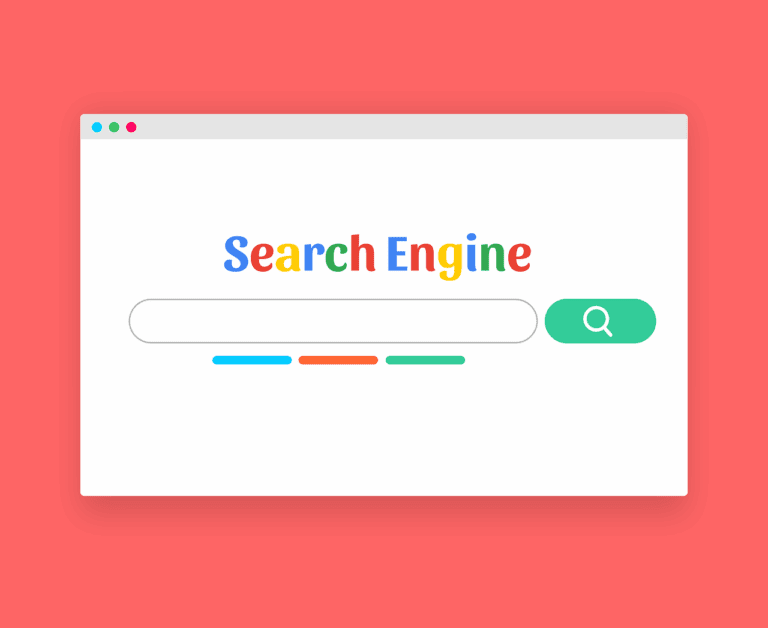It’s Valentine’s Day 2023, and Jasper is hosting the first-ever Generative AI conference in the heart of tech, innovation and fundraising and everyone’s favourite city of love – San Francisco.
An 11-hour flight from London a few days before was a small price to pay for the opportunity to be part of this groundbreaking event, with plenty of revelations about the current state and future of generative AI.
The Gen AI conference was attended by industry leaders, innovators and AI experts from around the world, with talks on using AI to unlock creativity, future-proofing business and the future marketing AI tech stack, as well as panel discussions and live demos in breakout areas.
In total, the event hosted nearly 20 speakers from leading AI companies, including Open AI, Stability AI, Jasper, Anthopic and Cerebras. If there’s a place to uncover what’s happening in this industry, San Francisco and Jasper’s Gen AI conference is the spot.
Timing
In the weeks before the conference, AI hit the headlines with Bing’s announcement they had beaten Google to the punch by integrating AI chat into their search engine. Google responded quickly with BARD; however, an error in the demo wiped $100 billion off their share price within hours of the event.
Dave Rogenmoser, Co-Founder & CEO of Jasper, was quick to acknowledge the incredible timing of this event in his opening talk. He also spoke about the amazing times we are living in and the positives of companies like Google and Microsoft battling it out for the AI crown.
The truth is that back in October when the conference was first being planned, Generative AI wasn’t even a term. Yet over the past few months, awareness has skyrocketed with the launch of ChatGPT, bringing AI chat into the mainstream.
The Future of Generative AI
This one-day event focused on how generative AI is changing the face of marketing, programming and humans in the workplace. In many ways, it was an opportunity to see behind the hype and get on-the-ground insights and first-hand details about AI.
I’ve brought together my key takeaways from the event and conversations with industry leaders shaping the field. From engineers and creators to investors and entrepreneurs, the Gen AI Conference attracted an incredible range of talent excited to explore the possibilities of generative AI.
Zach King
Zach King, a Filmmaker & Content Creator, kicked off the morning by giving us an incredible insight into his TikTok and video content creation process. He even created a TikTok live on-stage with some clever camera trickery making an audience member pop from their seat to the stage in a split second.
Zach’s talk focused on how he and his team use AI in the ideation stage of content creation. His three-stage ‘grow, refine, execute’ process requires his team to develop 50-100 ideas for themes and videos that can be put through the process.
With the use of AI, he’s gone from a team spending hours on ideation to using AI that generates hundreds of ideas in seconds. The impact is his team has more time to refine and execute the ideas, which ultimately means better video content can be produced.
The delivery of his presentation also only used artwork produced by AI which produced plenty of laughs but also demonstrated the more serious side with some impressive images from relatively simple prompts.
The takeaway from Zach’s talk is that AI can help unlock creativity in content creation through its speed and capability to generate ideas quickly, giving creators more time and energy to produce incredibly engaging and emotional content.
Kevin Roose
New York Times Technology writer Kevin Roose was the next talk I attended. His theme discussed the role of humans in a future filled with AI. It was refreshing to hear a balanced and well-researched view, given the current narrative of an AI dystopia where AI takes over the world.
Many feared blue-collar jobs would be wiped out. However, research shows that it’s white-collar jobs and workers with degrees that are most at risk of job disruption due to AI.
James shared three types of jobs that he felt would be safe from being replaced by AI, which are surprising jobs, social jobs and scarce work.
- Surprising jobs – AI works best on patterns and routines, so jobs like chefs, emergency plumbers and childcare workers with a high degree of unpredictability and human judgement are considered safe.
- Social jobs – AI is still not sophisticated enough to pick up on the subtleties of human interaction and communication, so roles like therapists and teachers, where human interaction and relationships are essential, will remain with us for a while yet.
- Scarce work – This was defined as work we wouldn’t let AI do. For example, we would trust AI to be a 911 operator, which comes with high stakes and a low fault tolerance. Another example is musicians. Taylor Swift has incredible singing skills and has built a brand around her music, so singers like her are unlikely to be replaced; however, her backing band and studio musicians could be at risk as AI-generated music becomes more sophisticated (like David Guetta’s Eminem voice showed!)
Kevin’s talk was inspiring and thought-provoking, as it made me think about the possibilities of a human-AI future. His takeaway – there’s no time to waste when it comes to learning about AI and developing the skills to work alongside it.

Watershed: How the Application of AI Will Reshape Business
The first panel of the morning delved into the impact of AI on business and discussed how apps are the key to unlocking the power of AI within organisations. Featuring some of the leading names in generative AI, hearing insights from these experts was both inspiring and enlightening.
- The speakers on the panel included Emad Mostaque, CEO of Stability AI, Sameer Dholakia, Partner at Bessemer Venture Partners, Shane Orlick, President of Jasper, Amjad Masad, CEO of Replit and Dario Amodei, CEO of Anthropic.
With the complexity and computing power required for Large Language Models, one key strand of conversation was whether businesses need to be developing their own models or harness the models that already exist.
The consensus was that we don’t necessarily need any more models, and the smart money is in developing apps using existing models, something that businesses are already doing by building teams dedicated to creating internal AI solutions using these models.
ChatGPT, for example, is an app that uses the GPT-3 model and is a key turning point in the public’s perception of AI. It suddenly made an AI model accessible through an easy-to-use UI that gives usable outputs in a conversational way. It’s the fastest app to reach 100 million downloads (2 months), beating TikTok by seven months.
If you’re interested in finding models to develop your own AI tools, Stability AI’s models can be used for free to develop their own in-house AI tech.
The Future AI Tech Stack
The next panel discussed a broad range of topics of AI tech with speakers including Aidan Gomez, CEO & Co-Founder of Cohere, Thomas Laffont, Co-Founder of Coatue, Andrew Feldman, CEO of Cerebras, Peter Welinder, VP Of Product And Partnerships at OpenAI and Greg Larson, VP Of Engineering at Jasper.
Andrew Feldman led a highly entertaining and informative strand on how AI impacts computing at the silicon level. Similar to moving from on-premise to the cloud, a new form of computing tech is required to run large AI models at scale and speed.
New processors are being developed specifically for use with AI, much like the powerful processors made for gaming or graphics. This development will help AI research and engineering to move even faster than the blinding pace we’re already seeing!
Another topic discussed was resource sharing across LLMs, partly because there’s only one internet to scrape, and so having multiple models scraping the same data wastes precious resources and tokens.
Again, there was agreement that the skin on top of the models makes it accessible and user-friendly to the general population and is a way for businesses to develop specific tools and IP and make the most of the power AI has to offer.
The exciting takeaway from this discussion was that we’re only getting started and that the next 12 months are going to be big. ChatGPT opened the world’s eyes to what’s possible with command and prompt models, and it’s getting much easier to build apps on top of these powerful LLMs.
‘Action’ is where we’re sprinting towards, which, in short, is where we ask a personal chatbot to do something like buy us an item, and it will go through the process, already having our credit card and login info to make the purchase. This seamless integration of AI into our daily lives is closer than one might think.

A Marketing Turning Point
The final talk of the day was hosted by Meghan Keaney Anderson, VP Of Marketing at Jasper. As an SEO practitioner, it was of particular interest, and I definitely wasn’t disappointed.
Meghan started by sharing an amazing stat about Jasper in relation to content creation. At present, there are around 4.2 billion words on Wikipedia and in 2022, Jasper users generated 15 billion words. If that’s not content creation at scale, I don’t know what is.
While AI removes barriers to creation, in the world of content and SEO, creativity and originality win. That’s why AI should be used to augment and support a process, not replace it. Some of the time saved on creation should be reinvested into ideation, research and editing.
Poorly written content that’s factually incorrect and is only surface level isn’t useful for anyone, but a piece with human stories and research outside of what AI throws up is more likely to rank, resonate and move your audience to take action.
Meghan also raised great points about bias and representation, a topic that goes beyond content creation and is relevant to many AI use cases. She reminded us that AI has the potential to make our lives better and easier, but only if we stay mindful of its current biases.
The key point is that nobody should be mindlessly publishing AI-generated content. You must have robust processes in place that ensure you’re using AI responsibly and that your tone and language is on-brand.
Summary: Embrace AI & Buckle Up For Rapid Change
During my time in San Francisco at the Gen AI conference, there were plenty of valuable insights on offer into the power and possibilities of AI and how one can and should use it responsibly.
The talks, panels and discussions shone a light on the speed at which this technology is developing, the money being invested, and how AI can be used by businesses to make their processes faster and more efficient.
At the same time, we should all remain mindful of the potential for bias in AI and make sure we are using it to augment our processes, not replace them, and, for now, at least, a human touch is still required.
All-in-all, attending Gen AI was an eye-opening experience that has me eager to see how this technology continues to develop in the coming months and wondering what next year’s conference will look like and which topics will be on the agenda.





